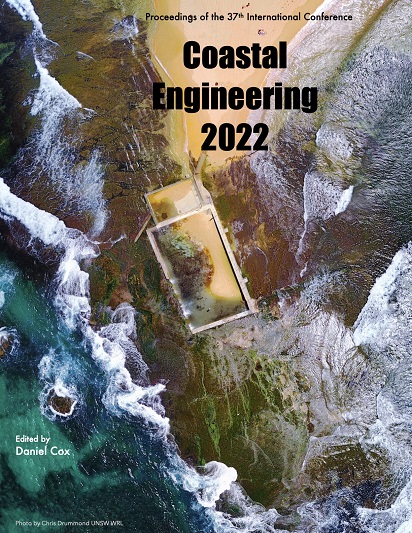Abstract
Smart phones are becoming ubiquitous devices that can be exploited for citizen science applications, including coastal monitoring (Harley et al., 2019). In 2020, Apple released new versions of their iPhone (12+) and iPad Pro (2020+) that included built-in LIDAR functionality. These were accompanied by a series of commercial applications (e.g., 3DScanner, Scaniverse, and many others) built to capture high resolution objects at close range using mesh or point-cloud formulations. The built-in GPS of the iPhone/iPads however is of low accuracy (~5m horizontal) compared to the demands for scientific surveys. Fortuitously, commercial hand-held RTK-GNSS units (e.g., EOS Arrow Gold, Pix4D viDoc, RedCatch) that can talk directly to the smart phones and provide surveygrade positioning have also been recently developed. The Pix4D viDoc and RedCatch devices are targeted at photogrammetry applications rather than the internal LIDAR scanner, while the EOS Arrow family is application independent. In the past year, several papers have been published examining the ability of smartphones equipped with LIDAR to be used in various geophysical applications ( Luetzenburg et al. 2021; Mokros et al. 2021; Spreafico et al. 2021). This then begs the question – can these smart phones equipped with LIDAR be reliably used for coastal monitoring with existing (free) commercial applications?References
Harley, et al (2019): Shoreline change mapping using crowd-sourced smartphone images. Coastal Engineering, ELSEVIER, vol. 150, p.175-189.
Luetzenburg, et al. (2021): Evaluation of the Apple iPhone 12 Pro LiDAR for an Application in Geosciences, Scientific Reports, SPRINGER NATURE, vol. 11, p. 22221.
Mokroš, et al (2021): Novel low-cost mobile mapping systems for forest inventories as terrestrial laser scanning alternatives. International Journal of Applied Earth Observation and Geoinformation, ELSEVIER, vol. 104, p. 102512.
Spreafico, et al, (2021): The ipad pro built-in lidar sensor: 3D rapid mapping tests and quality assessment. International Archives of the Photogrammetry, Remote Sensing and Spatial Information Sciences - ISPRS Archives, ISPRS, vol. 43, p. 63-69.

This work is licensed under a Creative Commons Attribution 4.0 International License.
Copyright (c) 2023 Kristen D. Splinter, Kilian Vos, Jordan Gois, Max Luker, Chris Drummond

